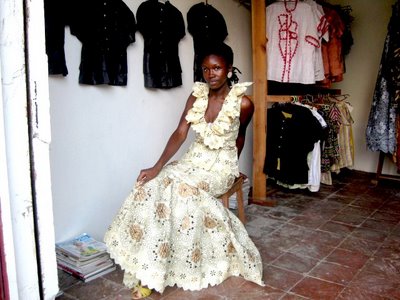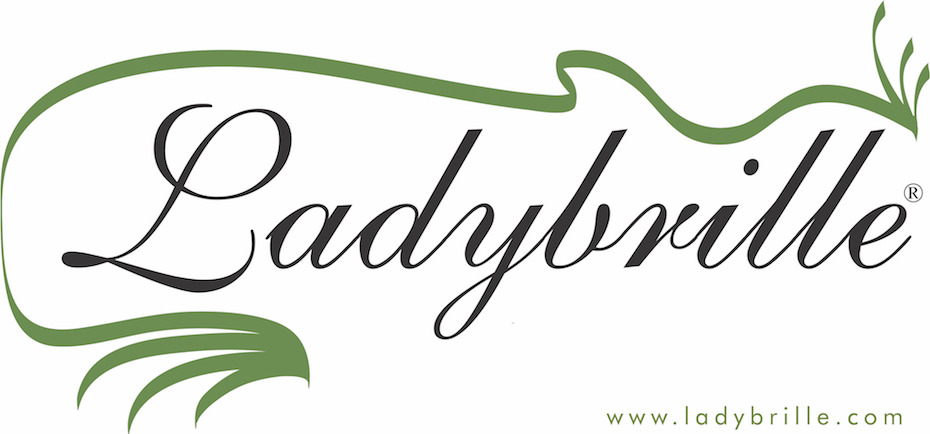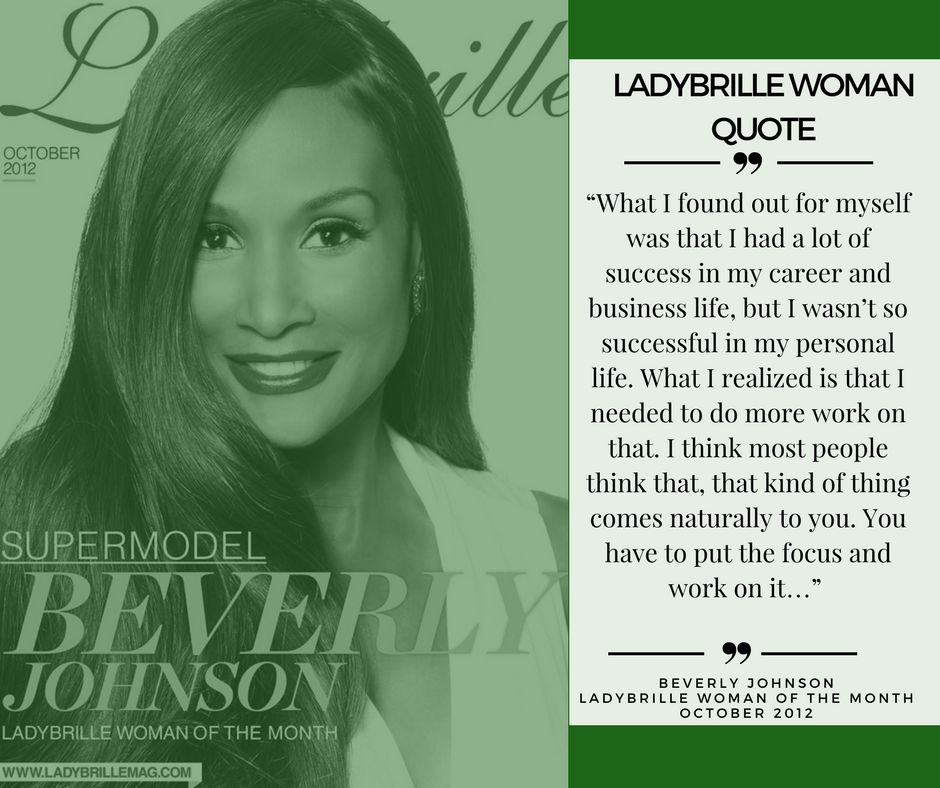 An interview with Adama Kai a woman focused on “changing the image of Sierra Leone from Blood Diamonds to Couture.” Enjoy.
An interview with Adama Kai a woman focused on “changing the image of Sierra Leone from Blood Diamonds to Couture.” Enjoy.
LADYBRILLE.com: Hi Adama. How is Sierra Leone treating you? Adama: It feels so good to be home honestly. That saying, “there is no place like home” is so true. Everyone has been so welcoming and supportive. Sun, beach, less stress, “no place like home!”
LADYBRILLE.com: Tell us briefly about your educational and personal background?
Adama: I am the third of four daughters to Sierra Leonean parents. I was born in New Jersey, grew up in Addis Ababa, Ethiopia. I attended a private preparatory boarding school in Westchester, New York. I attended the Parsons School of Design in Paris for college. Two years in Paris, one year back in New York and another two years in Paris. During this time I interned at different fashion houses and worked whilst going to school. After college, I moved to NYC where I worked for FLAUNT Magazine and later worked for MAGNET management agency for stylist, hair and make-up artists, as well as set designers before moving back home to Sierra Leone.
LADYBRILLE.com: You complete your fashion degree at Parsons in Paris and then you decide to move back to Sierra Leone. Why?
Adama: I wanted change, in design, opportunity and what I view as unexplored territory. I was helping to nurture the talents of others whilst mine had become stagnant. I had all this experience in different areas of the fashion industry but nothing that really set me apart from my peers. Right now in NYC, Paris, Milan, London there are millions of recent fashion school graduates that are looking for that opportunity to start their own line or design for big fashion houses like Balenciaga, YSL, etc.
Don’t get me wrong, I like competition. I believe it brings out attributes in an individual that one may not even be aware of, but more importantly I like to challenge myself. In this industry from what I have observed 90% of an individual’s success lies on who you know and what opportunities come your way. Hard work and self determination is a must. So I made the decision to move home with all the experiences I had gathered throughout my education and with a dream to start a clothing line that would catapult African Fashion into the mainstream fashion arena.
LADYBRILLE.com: How long has it been since your move and how adjusted are you in your new life?
Adama: I moved home on the 29th of November 2007. It has been 10 months now since I have been back. I always came home so my surroundings and daily living is nothing new. Sierra Leone has a population of about 5 million. There is not much to do socially besides the usual bar or club. My friend in NYC and Paris are constantly asking me, “what are you doing over there?” I used to be on set for fashion shoots with huge entertainment artist like Kelis, Feist and Jennifer Jason Leigh [as] they [wore] clothes straight off the runway, helping to manage the talents that design the sets for Versace, Prada and Gucci campaigns each season.
In Sierra Leone, I find myself very much consumed by my work as well. It has been hard adjusting to my work life here. I am my own boss. I am responsible for my staff as well as my management team. They can only be as strong as I am. I have to admit at times it is really difficult. Especially when more often than not I am the youngest one in the room, yet I am the leader. How do I instill in people the concept of work ethics when they have never had to work under any particular time schedule or standard of quality? How do I guide my management team in the development of my business when none of them have ever worked in the fashion industry before?
LADYBRILLE.com: Briefly walk us through a typical day in the life of Adama in Sierra Leone?
Adama: I am up by 6:30a, I catch a ride to work with my dad and my assistant [who is also the human resources coordinator for Aschobi] by 7am. My assistant and I open the atelier by 7:30am. The tailors are all in by 8am. We have our five minute morning meeting, going over what we want to achieve by the end of the day so everyone is set on what they have to finish by the end of the day. My assistant and I spend some time going over orders from the previous day and scheduling fittings for the week while having breakfast. My apprentice comes in at 9am and I prep her on what I want to do for the day for the development of the new collection.
I am normally in front of the computer at the internet café next to the atelier by 11:30am. I spend about 45mins chatting with my boyfriend then going through my e-mail responding to orders, sending out newsletters and following up on past e-mails of interests. Depending on what is happening for the week I might have to do some research for a client’s personal order, [s]ome production obstacles we are facing in the atelier or to elaborate on an idea I have for the new collection etc. I get back to the atelier by about 1:30-2:00pm by that time we have walk ins at the atelier; or the contractor will come in to tell me about the progress he has made on the renovation of the atelier. Depending on the day there will be some fittings scheduled. Around 4:30-5:00pm one or all the members on my management team will come in for a scheduled meeting or just to see how things are going. There are four of them, production, marketing, press, finance. We start wrapping things up at the atelier around 6 pm we close by 6:30-7 pm and I am normally home by about 7:30pm.
ASCHOBI DESIGNS
LADYBRILLE.com: What a busy day! What does the name Aschobi mean?
Adama: ASCHOBI is a play on the spelling of the Yoruba word “Aso ebi”. It is a concept that is practiced throughout the West African region. For any particular event or any particular gathering in which a group of individuals want to be identified as a unit, they will choose to wear the same material sometimes in the same style. [It is done ] to be exclusive but at the same time inclusive.
LADYBRILLE.com: What influences your designs?Adama: As a designer for an African clothing line, it is safe to say that I am very much influenced by the textiles and different materials I come across. But I would think all designers whether they are fashion designers or architectural designers are greatly influenced by the materials they used. Otherwise my work is influenced by so many different mediums.
I am a visual person so anything that I come across in my daily life: a book, hairstyle, jewelry, any particular ethnic group, a movie, song, architecture, historical time periods I can go on. In the case of Aschobi, I find myself constantly asking myself how will the new African woman pull this look or style off? How can she maintain her African lifestyle at a black and white affair without having her outfit look too traditional? This is a concept that influences my work greatly, that my customers feel that they can wear their Aschobi not only in Africa but anywhere in the world and they feel comfortable and confident in it.
LADYBRILLE.com:Describe your clientele. Who is the Aschobi woman?
Adama: The new African woman is the Aschobi woman. She is global, international, intercontinental, socially responsible, fashion conscious and fashion forward. She is a chameleon that can blend into any setting but still leave a mark and this is often because of her choice of dress. She is educated, a professional and is concerned with what happens when tradition meets modernity. She is confident.
LADYBRILLE.com: You have been quoted saying that what “you are doing is enriching Sierra Leone.” and you say that it’s like opening a “hospital or a school.” Arguably schools and hospitals are critical to improving the overall health and economic state of Sierra Leone. High fashion/couture is not. Could you elaborate on what you mean when you say it enriches Sierra Leone?
Adama: What I know is that you can follow the history and development of the world culture and its people through cloth. The topic of dress is [that] of self-image, self-esteem and self-confidence. With the recent past history like ours [Sierra Leone], one can only imagine what it has done to our self-image. Some say fashion and style is superficial but I believe it has a way of boosting ones self esteem and I see self-confidence as critical for social development. Aschobi is changing the image of Sierra Leone, from Blood Diamonds to Couture. Through fashion, I am employing tailors, through the tailors’ talents, I am showcasing African style. I am enriching their lives an dshowing them a new way of looking at life.
LADYBRILLE.com: The Gross Domestic Product for Sierra Leone is said to be roughly $216.00.I am informed your price points are high for the average Sierra Leone woman. From a business standpoint, I understand that by the time you factor, entrepreneurship, human and financial resources, materials, technology or lack thereof among other things, it more than justifies high price points. But, how do you look the average Sierra Leone woman in the eye and say my garment cost say $70 when she can barely afford clothes that cost $10?
Adama: As far as indicators go, GDP is not an adequate way of measuring development or available income in a country especially in a country like Sierra Leone where the majority of income is non-reportable income so to speak. In other words, most people are involved in non conventional jobs. Take for example the cars people drive or the kinds of homes that are built or even the cost of renting a home in the country. If you compare it to the GDP . . . If we talk about something more common to the average sierra Leonean: cell phones, most Sierra Leonean aged 17 and up have them. If you consider that the cheapest ones sell for Le 150,000 and we see people who are civil servants earning less than that amount buying $300 phones, you realize that using GDP as an index for the spending power of the average Sierra Leonean can be very misleading.
I believe that a developing country as well as any modern country needs the avant-garde to reach greater social achievements. I am aware that the average Sierra Leonean may not be able to afford a modestly priced Aschobi piece. But in the long run, they will benefit from the new image Aschobi is carving for Sierra Leone. Therefore, I am designing fashion as a Sierra Leonean I am launching this platform from Sierra Leone to represent Sierra Leone. I want Aschobi to be the aspiration and desire of every Sierra Leonean but also for everyone else too.
LADYBRILLE.com: How do you plan to improve efficiencies with production of your garments so you can make your clothes affordable to the average Sierra Leone woman? Do you want it to be affordable to the average woman in Sierra Leone?
Adama: Production is a major issue but we are finding solutions like training for tailors from other experts in the field. For us, it is not about making it more affordable. It is about making it functional for everyone. And while we are beginning with couture we do have a ready to wear line and we are developing T-shirts and even tote bags for school, slowly but surely.
LADYBRILLE.com: One of the biggest complaints I hear African designers in Africa complain about is the lack of skills necessary to help them execute their vision i.e. tailors, seamstress etc. What has been your experience so far?
Adama: The experience has been ups and downs. We have changed tailors, tested the market. What I am most proud of is the growth that I have seen in the tailors that have stayed. Aschobi has become their inspiration and their goal. It is a growth process. I acknowledge and embrace that. When you choose a third world country as your platform, it kind of comes with the package. But, this is a learning process for all involved and this is part of development and we are taking it as an opportunity because there are also many hidden talents.
LADYBRILLE.com: Senegalist Fashion icon Oumou Sy started a fashion school in her country and has trained many. Do you think you will follow in her footsteps as you trailblaze this new path?
Adama: YES that is as BIG dream for Aschobi. In school, Oumou Sy was such an inspiration to me. We are in talks and researching design schools as we speak. Aschobi has a lot on our plate right now so we are accomplishing our goals, one at a time.
LADYBRILLE.com: Right now you are getting recognized by international media from BBC to Reuters. How do you plan to leverage this publicity so you can convert it into profits for your company?
Adama: I am so overwhelmed by the interest of international media for Aschobi Designs and I realize only a few will come to my atelier in Freetown. I see the internet as a customer relations platform. I didn’t care much for the internet whilst living in Europe and America. But, right now, I know it is such an important tool to me and my work and it will be a key resources in connecting me to the people that I want to reach and those that want to reach me. Realizing this, I am taking key steps in setting up the Aschobishop website. Making sure that it too is exclusively inclusive.
LADYBRILLE.com: Our whole goal and hope when we feature African designers on Ladybrille is to encourage USA and other Western fashion buyers, primarily, to contact you directly to order as many units as possible for their retail stores. Are you prepared at this point to mass produce and where can our very Ladybrille Western fashion buyers reach you?
Adama: We are prepared to mass produce certain items only. We can be reached at 232 33 599 792 . Drop by our new website aschobishop.com which will be launched before Christmas. Send us an email to [email protected] and we will be sure to let you know when the site launches.
LADYBRILLE.com: Where can our Ladybrille readers reach you to purchase your garments?
Adama: We are located at 17 Pademba Road, Freetown, Sierra Leone. We also have a facebook page titled Aschobi Designs. Our website is under construction and will be ready before Christmas. But, you can still visit it to see pictures of various styles and photoshoots we have http://www.aschobishop.com/. We can also be reached at [email protected].
LADYBRILLE.com: Where do you see Aschobi in five years?
Adama: In five years I see the Aschobi shop on 17 Pademba Road standing as a landmark in Sierra Leone. I see Aschobi products being carried by major department stores and boutiques through out the Diaspora. I see Aschobi as a household name in the fashion industry on the continent of Africa. I see the Aschobi website as a place where all these things and the Aschobi lifestyle merge and it becomes a place for people to satisfy their craving for all things Aschobi.
LADYBRILLE.com: It will be so if you believe. Adama, there has to be a trailblazer in Sierra Leone in fashion and we are glad it’s you. Thank you. Keep us informed at all times of events, new collection etc. so we can continue to support your work in Sierra Leone. You are not alone!
Adama: I am so proud and grateful for this opportunity. Ladybrille has been a place I have always wanted to associate Aschobi with; and here you are selecting me as your Woman of the Month! Cheers to you and what you are doing for fashion in Africa today. Thank you.
A running feature for 12 years on Ladybrille.com, The ‘Ladybrille Woman of the Month’ celebrates women in business and leadership, who empower themselves and others through their contributions and actions in their local and international communities. In 2014, the feature expanded to include a podcast show. If you would like to nominate a woman to be celebrated, please email [email protected].










tres tres belles photos ..great and honest interview:)wishing adama all the bestyaye
Your point of view is clear Adama.. I get it! and your work is beautiful :)I look forward to meeting you someday.
I love the way the pictures show the context in which she createsbeauty, resilience, enterprise in a postwar situation
Thank you for being such an ardent reader!
I am such an ardent reader of your blog. U have no idea! It's like my personal 'In-Style' for African designers and the likes. I am so so proud of Adama. I don't know her personally but her story and the pictures I saw have given me courage to start small. More power to a fellow African sister and to you I say there is no stopping you. To the Ladybrille team I say, thank you in the many languages I know…E se! Sosongho! Medasi! Daalu!